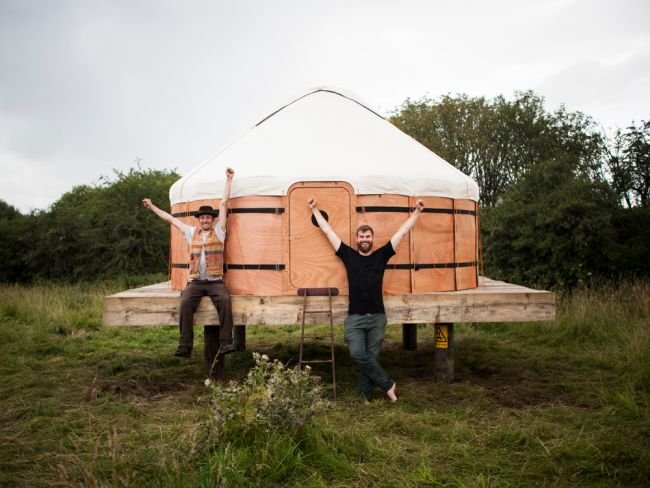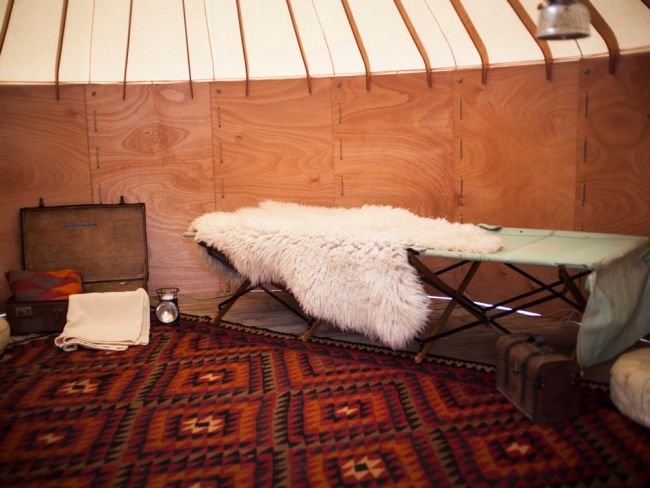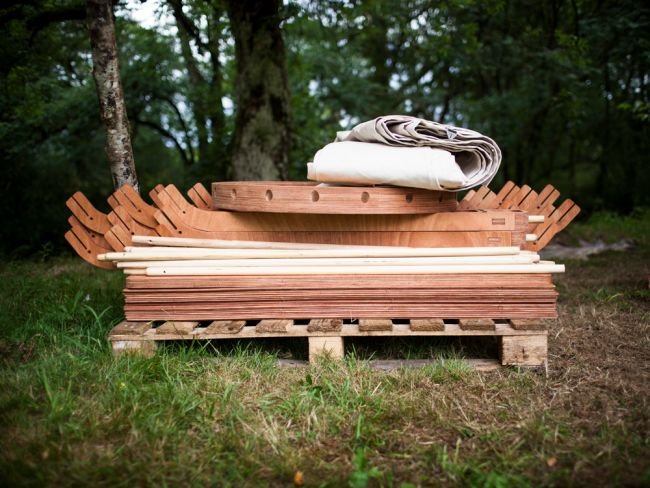
Yurts have been around for thousands of years, providing shelter and protection to humans. Imagine the beautiful landscape of Mongolia dotted with yurts here and there. They are handmade stable structures, that are simple to assemble and easy to transport. The feeling of a Nomad is what the Yurt promises to deliver to its inhabitants.
Sadly most of us can’t travel to Mongolia to live in one, instead we can order one and camp in it. The modern day Yurts have a construction pattern that is very similar to the way it has been done all these years. The roof struts form the framework of the structure that start from the sides to the center.
But unlike the original ones owned by the natives, these modern day Yurts cannot be folded and carried around easily. They are too big to fit in a car and the mules left the cities long time ago. So as Alec Framer, the founder of Trakke puts it, the Yurts are lovely, but best suited to be used without much moving around. Unless you have friends as volunteers ready to offer a hand.

This was the story till he met Uula Jero. Together they crafted Jero, a modern twist to an ethnic Yurt. This new improved version is almost half the weight of the earlier version and compact enough to put it in your boot. Having stayed in a Yurt himself, Jero had first hand experience of it. Hence, his hands on experience edged him to build something that would be light and compact. So much so that it could be carried around on a cycle.
The Farmer and Jero’s, creation is made of marine plywood that is resistant to the elements, is affordable and can be produced by creating very little waste at the production stage. After a basic design is conceived on paper, the modern day Yurt is given shape on a computer.
The Yurt now comes with 17 sheets of plywood that is 5mm thick and can be easily contoured to form the basic shape. These pieces are held together by cleft pieces that latch onto the Yurt’s walls. The basic models offer a diameter of four meters and come with 36 pegs. The designers were also able to design Yurts that are half of this size and need even less wood.
The components in this Yurt measure not more than 1.2 meters and weigh approximately 110kgs. Jero is confident that a couple would be able to install it in less than two hours.
These branded nomad style quarters do not come cheap, priced at $7480, they sure a high price to pay. But when you compare the interiors, to that of a cold uninviting apartment, it sure is a good deal.






Via: Wired




I LOVE the way they designed the roof supports! Bravo!